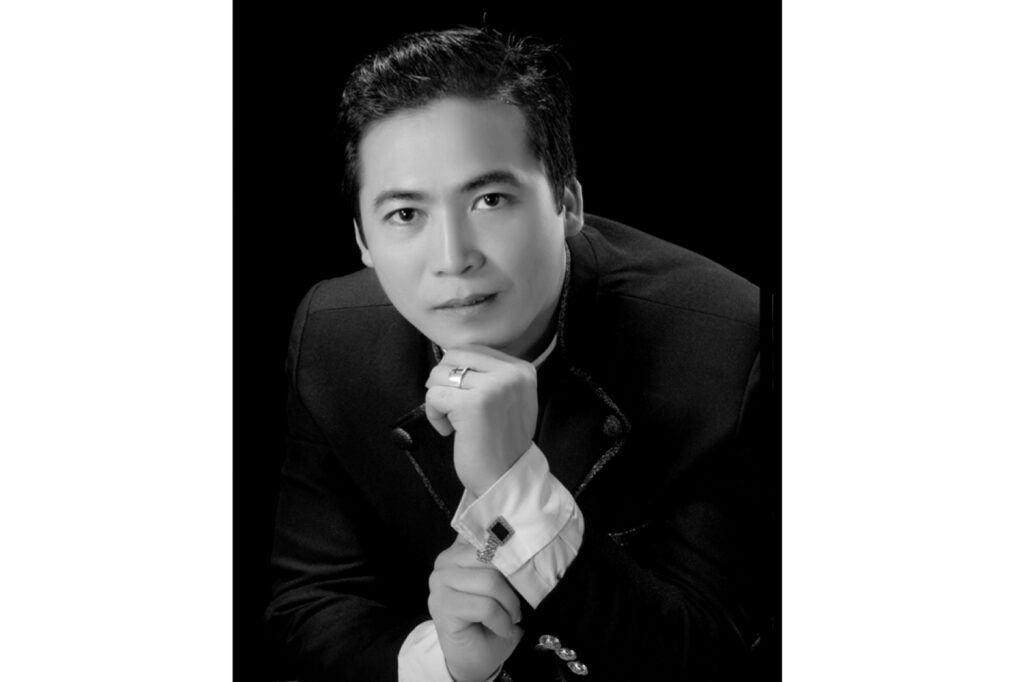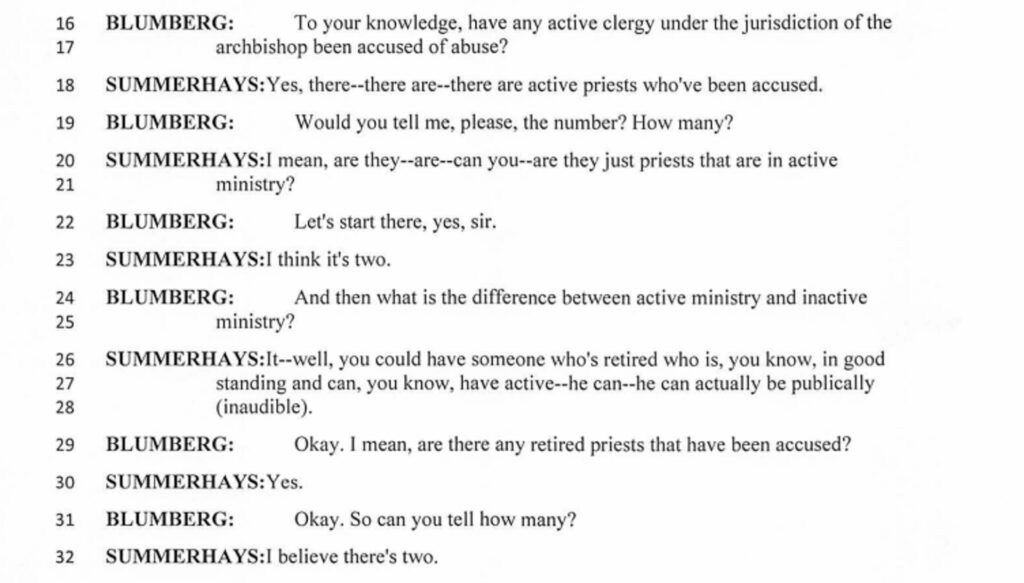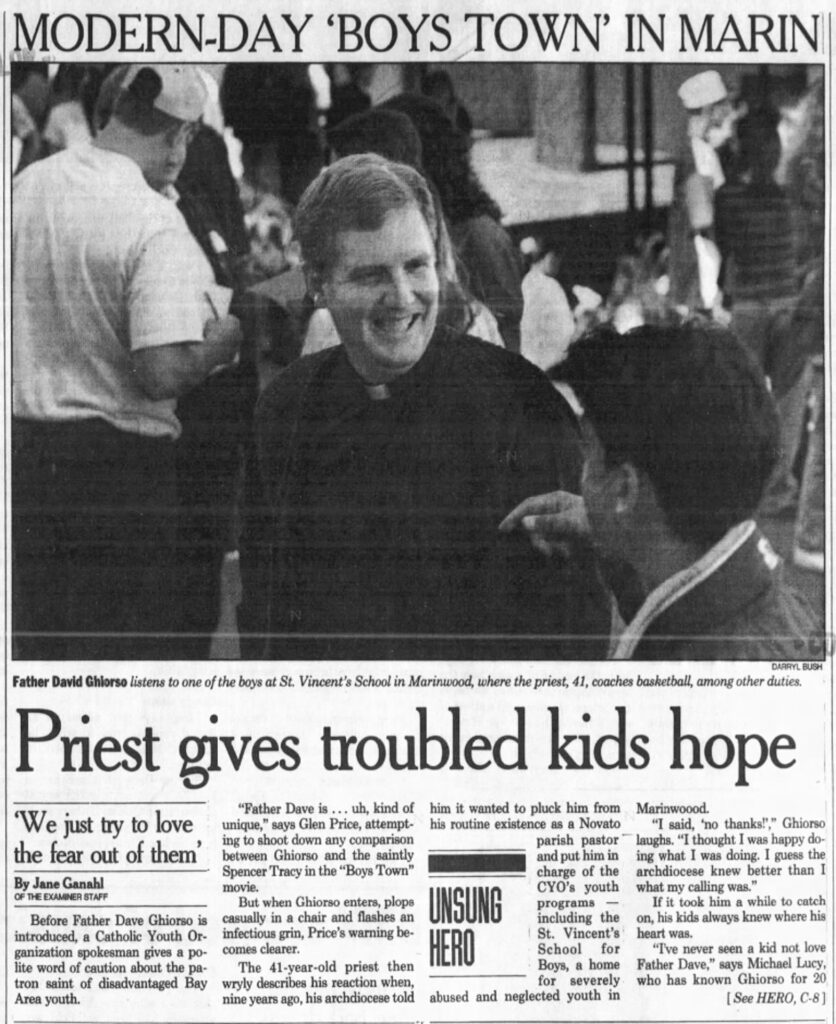SAN FRANCISCO (CA)
KQED [San Francisco CA]
November 16, 2023
By Alex Hall
Warning: This story contains descriptions of sexual abuse and may be disturbing to some readers.
A San Mateo priest accused of molestation in a lawsuit is one of two accused clergy who remain in active ministry with the Archdiocese of San Francisco as the church faces renewed questions over how it responds to sexual abuse allegations.
The lawsuit, filed in Alameda County in November 2022, alleges Father Linh Tien Nguyen sexually abused a former altar boy and student of St. Pius Catholic Church and School in Redwood City between approximately 2005 and 2008.
The plaintiff in the case, identified as “M.S.,” alleges he was between 10 and 13 years old. He is now in his late 20s.
“This young person has got a lot of courage,” said Dan McNevin, Oakland leader of the Survivors Network of those Abused by Priests, or SNAP. “If there’s any good news in this, it’s that this survivor had the courage at a very young age to come forward and has probably expedited the healing of a lot more kids.”
Official Catholic Church records show Nguyen worked as a pastor at St. Pius from 2005 through 2009. He is currently an associate pastor at St. Bartholomew Parish in San Mateo.
Nguyen and other staff members of St. Bartholomew did not respond to KQED’s requests for comment on the allegation.Sponsored
A second priest, Father David Ghiorso, faces multiple allegations of sexual abuse of young boys at St. Vincent’s School for Boys in San Rafael and a Sonoma County summer camp in the 1980s and ’90s, according to court records and a source familiar with one of the cases.
The details of the accusations are laid out in documents from two lawsuits filed in Alameda County — one in 2020 and another in 2022. Today, Ghiorso is the pastor of St. Charles Parish in San Carlos and St. Matthias Church in Redwood City.
The allegations in the lawsuits have not been proven. The plaintiffs either declined or did not respond to interview requests.
“I can tell you that the Archdiocese followed its procedures in the instances you raised and that Fr. Ghiorso and Fr. Nguyen are priests in good standing and have faculties to minister in the Archdiocese,” Peter Marlow, the Archdiocese of San Francisco’s executive director of communications and media relations, told KQED in an email.
The Archdiocese also denies the allegations in legal filings.
News of the allegation against Nguyen comes as the Archdiocese is pressed for details in bankruptcy proceedings about how it handles sexual abuse allegations, and which priests it has deemed credibly accused.
On Nov. 8, the Official Committee of Unsecured Creditors, which represents survivors, requested the court’s authorization to subpoena the Archdiocese for documents on the church’s finances and allegations of abuse dating back multiple decades. The Archdiocese objected, calling the request “excessively overbroad, vague and harassing.” A hearing is scheduled for Nov. 30.

The Archdiocese sought Chapter 11 protection in federal bankruptcy court in August as it faced more than 530 lawsuits filed by individuals alleging sexual abuse by clergy or others associated with the Archdiocese under a 2019 state law, Assembly Bill 218, or the California Child Victims Act. The law waived all time limits for abuse claims from 2020 through the end of last year, and it permanently extended age limits to sue for childhood molestation — from age 26 to 40 years old or within five years after the discovery of the abuse.
The bankruptcy proceedings effectively froze all the state court cases filed against the San Francisco Archdiocese, its institutions and clergy.
In recent back-to-back legal calls in the bankruptcy case, representatives of the Archdiocese answered questions under oath from the Office of the U.S. Trustee and the committee about the church’s financial situation and knowledge of abuse allegations. Officials said the church had found no accusations against clergy to be credible in the past decade, but has become aware of multiple allegations in that time.
In a Sept. 28 meeting of creditors, the Archdiocese’s Vicar General, Father Patrick Summerhays, disclosed that two active priests and two retired priests had been accused of abuse. Each has been exonerated by the church’s internal process, according to the Archdiocese.
“I have not yet received a credible allegation against a priest, although I have received allegations,” Archbishop Salvatore Cordileone said two weeks later in a continuation of the hearing, referring to his 11 years as Archbishop.
When asked how many cases the Archdiocese has received in that time, Cordileone said there have been seven or eight accusations the church has had to investigate.
The Archdiocese’s process for responding to an allegation of sexual abuse of a minor involves reporting the allegation to civil authorities and removing the accused priest from active ministry while an investigation is conducted by a qualified investigator. A report on the findings of that investigation are handed over to the Archdiocese’s Independent Review Board, a panel of lay people who issues a recommendation to the Archbishop as to whether the allegation is ‘sustained’ or ‘not sustained,’ according to the Archdiocese’s website and church representatives.
“I’ve heard different theories as to what credibly accused means,” Cordileone said. “I try not to use that term and rather use [the] term ‘sustained’ or ‘not sustained.’”
What standard the Independent Review Board, or IRB, uses to determine if an allegation is sustained is unclear, James Stang, an attorney for the Unsecured Creditors’ Committee, later told KQED in a phone interview.
“I can’t find anything that defines it in what the public can see on the website,” Stang said. “In other words, if I go to the website, and they discuss the review board process, I don’t see a definition of what constitutes a sustained claim.”
He continued: “I think the public should know what it means to have a sustained accusation. There has to be a definition somewhere. It can’t just be a gut check. There must be some standard that these review board people are using.”
While there isn’t a single, uniform definition of what constitutes a “credible accusation” against a priest that is shared across all Catholic dioceses, many have publicly shared their interpretations alongside published lists of credibly accused priests in their jurisdiction.
The Archdiocese of San Francisco is the only diocese in California that, to date, has not published such a list. Instead, the Archdiocese maintains a public list of priests and deacons in good standing who are approved for ministry in the Archdiocese.
In its Nov. 8 filing, the creditors’ committee asked for records related to abuse claims dating back to as early as 1941. Among them: personnel files of accused priests, communication between the Archdiocese and law enforcement agencies over the years, and documents explaining the church’s interpretation of “credibly accused.” It also requests documents from the paper trail of the church’s evaluation of sexual abuse allegations, including IRB meeting minutes, interview notes and recommendations.
When asked what standard of proof the IRB uses to determine if an allegation is “sustained” or not, Marlow said, “The process is for the Independent Review Board to review a claim and the investigator’s report and any other relevant information that can support a recommendation.”
When pressed for more details, he declined to clarify that aspect of the process further. In a subsequent email, Marlow elaborated on what happens when the IRB determines that an allegation is sustained. If the IRB finds that there is sufficient evidence to warrant a canonical trial and the trial results in a conviction, then the accused priest would be permanently removed from ministry. If the IRB finds that an accusation is not sustained, then the priest is reinstated to active ministry and damage to his reputation is remediated.

The IRB was established in 2002, the same year that the United States Conference of Catholic Bishops established the Charter for the Protection of Children and Young People, a set of procedures for addressing allegations of sexual abuse of minors by clergy often referred to as the Dallas Charter.
“Review boards were strangled in the crib before they could do something,” said Jim Jenkins, a retired East Bay psychologist who was the IRB’s first chairman at its inception.
Jenkins resigned in 2004 over concerns about the board’s integrity and ability to investigate independently. During his time on the panel, it was the Archbishop who decided what to do with an allegation, not the IRB, Jenkins told KQED.
“When they say the review board reviewed this and did not find anything sustained, that may be true,” Jenkins said. “But the fact that father so and so is recommended to be suspended — that is completely up to the Archbishop. They would never allow anyone else to make that decision. Certainly not lay people.”
Jenkins acknowledged that nearly 20 years have passed since he served on the board, which may have different processes today.
Attorneys for the Archdiocese stated that Cordileone has always followed the IRB’s guidance. Three IRB members contacted by KQED did not respond to interview requests.
Nguyen was placed on administrative leave in October 2022 and returned to ministry two months later, according to the Archdiocese. Ghiorso went on leave for around two months in late 2021.
Marlow declined to say what information the Archdiocese found in its investigations that resulted in Nguyen and Ghiorso both returning to ministry.
“While IRB investigations and recommendations are not shared with the media, I can tell you that the Archdiocese followed its procedures in the instances you raised and that Fr. Ghiorso and Fr. Nguyen are priests in good standing and have faculties to minister in the Archdiocese,” Marlow told KQED in an email.
Spencer Lucas, the attorney representing the complainant identified as M.S. in the lawsuit accusing Nguyen, expressed skepticism about the church’s processes.
“We do know that the Catholic Church, on a very broad scale, has done an inadequate investigation into many, many of these claims,” he said. “We should all be concerned that the church has not taken adequate steps to properly investigate claims and to institute appropriate training to raise awareness about this ongoing problem.”
‘We have our own list’
Survivors and advocates have been calling on the Archdiocese of San Francisco to release a list of priests who have been credibly accused under its watch for years.
In the Oct. 12 meeting of creditors, Cordileone disclosed that while the list hasn’t been released to the public, it does exist.
“Does the Archdiocese have a list of clergy where the [Independent] Review Board has made a determination that the accusation is sustained?” Stang asked the Archbishop.
“We know which ones those are, yeah,” Cordinelone replied. “We have our own list.”
Asked why the Archdiocese has not published the list, Cordileone said that no one has given him a reason for doing so.
“The most important thing is that our young people are being protected and that those who abuse are kept out of ministry for doing that,” he added.
Jennifer Stein, an attorney with Jeff Anderson & Associates, which represents over 400 alleged survivors with claims in Northern California, the majority of whom are in the Bay Area, was listening.
“This is an ongoing and recurring theme that is self-serving to the Archdiocese,” Stein said. “It puts children and the public in great peril by keeping that information secret.”
In September 2022, SNAP published its own list of 312 priests who have been publicly accused of abuse and were associated at one point or another with the Archdiocese of San Francisco. Nguyen’s name is not included on the list as the M.S. lawsuit was filed two months after publication. Ghiorso’s name, however, is.
In October 2021, parishioners of both churches where Ghiorso currently works were notified via a letter that he had been named in filed claims and would be temporarily restricted from exercising public ministry while an investigation was conducted.
The announcement came nearly a year after a lawsuit was filed in Alameda Superior Court by two men alleging they had been sexually abused while they were living at St. Vincent’s School for Boys, a residential program for disadvantaged boys in San Rafael.
In court records from the lawsuit, plaintiff Gary Johnson alleges that he and other boys from St. Vincent’s were molested by priests at a summer camp in Sonoma County for several years in the early 1980s.
The lawsuit alleges several priests began showing up at St. Vincent’s weekly to take the boys off-campus to Camp Armstrong, where they were given alcohol and molested or forced to engage in sex acts with one another, according to court records.

“When not participating, perpetrator defendants would also watch the boys abuse one another and would masturbate as they watched,” the complaint reads.
After reporting the abuse to an athletic coach at the school, who notified the school’s front office, Johnson was removed from St. Vincent’s and placed in a foster home, according to the complaint.
A second plaintiff in the same lawsuit alleges a priest abused him for a year, shortly after he arrived at St. Vincent’s in 1989 at the age of 9 and became an altar boy. Marcus Raymond Hill alleges that on one occasion, when he and other boys were invited to the rectory for doughnuts after mass, he was asked to stay longer, given wine and forced to masturbate the priest.
On three other occasions, the complaint states the priest allegedly plied Hill with wine and anally penetrated and raped him.
Ghiorso, who is not named in the lawsuit, is identified as the alleged perpetrator in the case on a matrix filed in Alameda Superior Court. The matrix is a chart that displays data from hundreds of Northern California clergy sex abuse cases filed under AB 218, including case numbers, attorney names, alleged perpetrator names, dates of alleged abuse and other information.
A person familiar with the case confirmed to KQED that Ghiorso is an alleged perpetrator in the lawsuit. NBC Bay Area previously reported the allegations.
Ghiorso was ordained in 1981 and worked as a pastor at Our Lady of Loretto Church in Novato through 1985, according to the Official Catholic Directory. From 1986-1990, he was the associate director of St. Vincent’s. Ghiorso went on to fill leadership roles with the Catholic Youth Organization and CYO Archbishop McGucken Youth Retreat and Conference Center, the location of Camp Armstrong, records show.
Ghiorso returned to the ministry in December 2021 following his temporary leave, according to Marlow. Four months later, court records show, he was accused in a new lawsuit of ongoing abuse of another altar boy at St. Vincent’s.
From around 1988 through 1991, an unnamed plaintiff alleges, he was “continuously anally raped and sexually assaulted” by Ghiorso when he was 10-13 years old. The plaintiff alleges Ghiorso began sexually abusing him in an area of the church that altar boys used to change. The abuse escalated to mutual oral sex and penetration in the church and at Ghiorso’s office, according to court records.
Several times, the plaintiff attempted to run away from St. Vincent’s and was heavily medicated by staff at the facility in an attempt to control his behavioral outbursts, the complaint reads.
The plaintiff first reported the alleged abuse to a private investigator hired by the Archdiocese, who contacted him in late 2021, according to the complaint. The investigator had “been previously told by one of the plaintiff’s classmates that the plaintiff may have been one of Father Ghiorso’s many victims,” the document reads.
“It was not until the plaintiff was contacted by the investigator that his memories of what Father Ghiorso did to him as a child resurfaced,” according to the document.
Ghiorso and his attorney did not respond to KQED’s multiple requests for comment.
When asked if Ghiorso was removed from ministry a second time pending an investigation into the new claim, Marlow declined to specify and instead restated that the Archdiocese’s procedures were followed in each case.
“There are good reasons why Fr. Ghiorso is a priest in good standing with faculties to serve in the Archdiocese of San Francisco,” he said.
